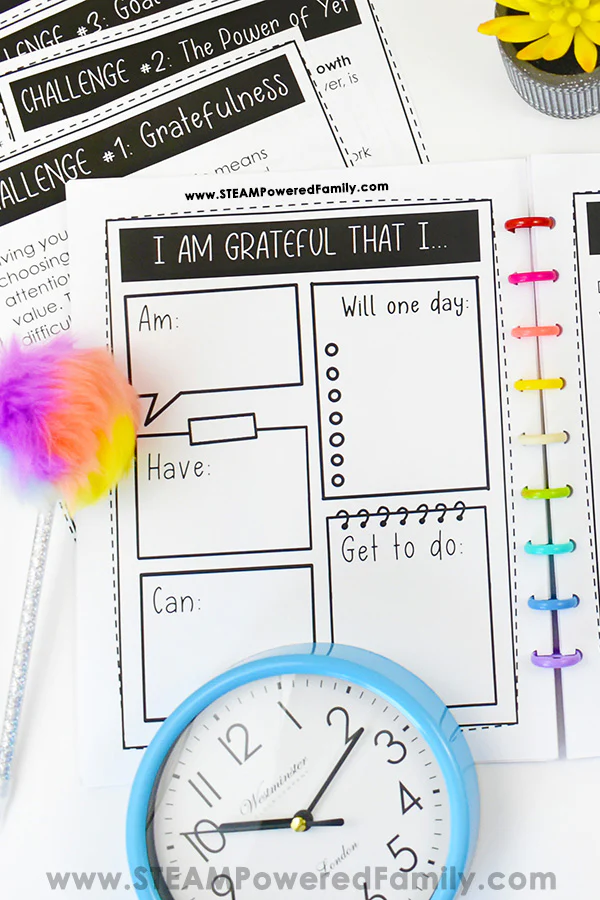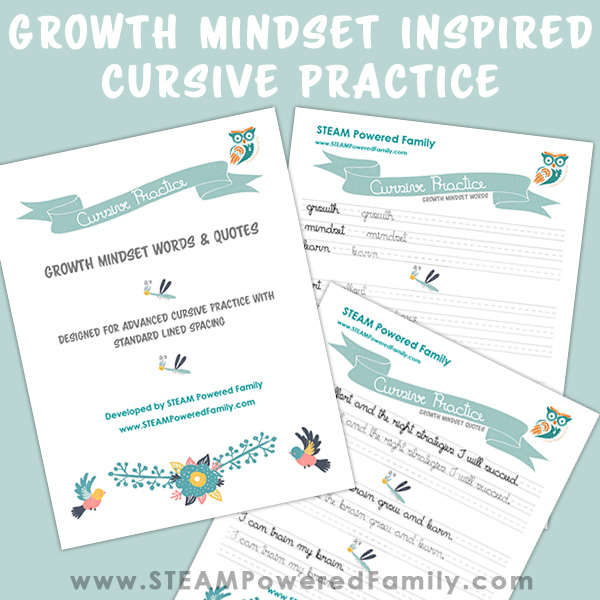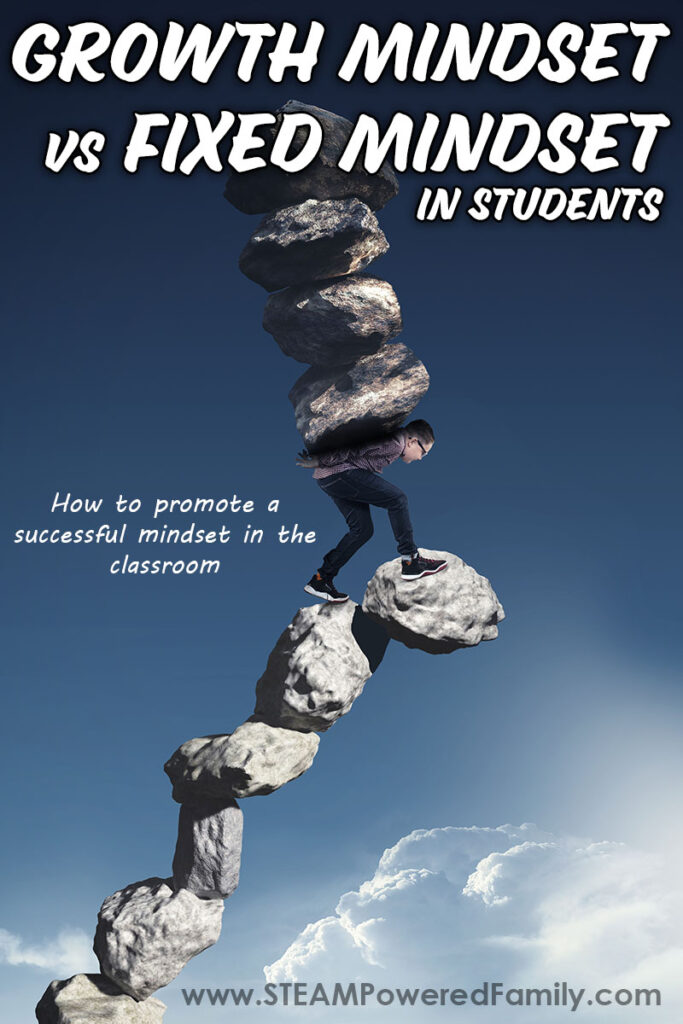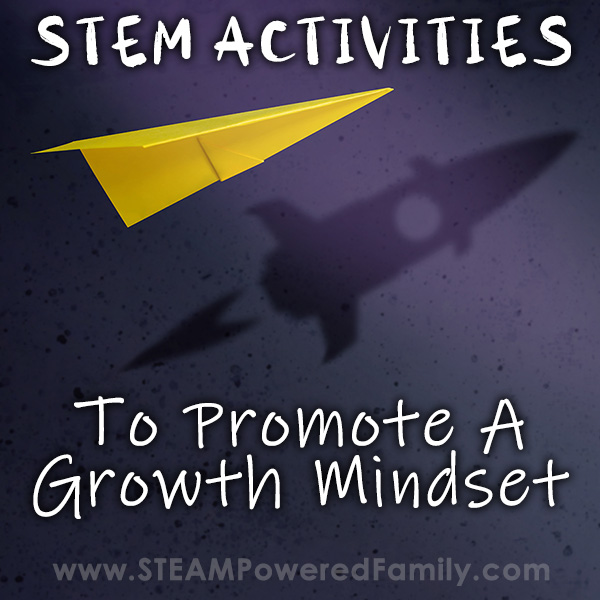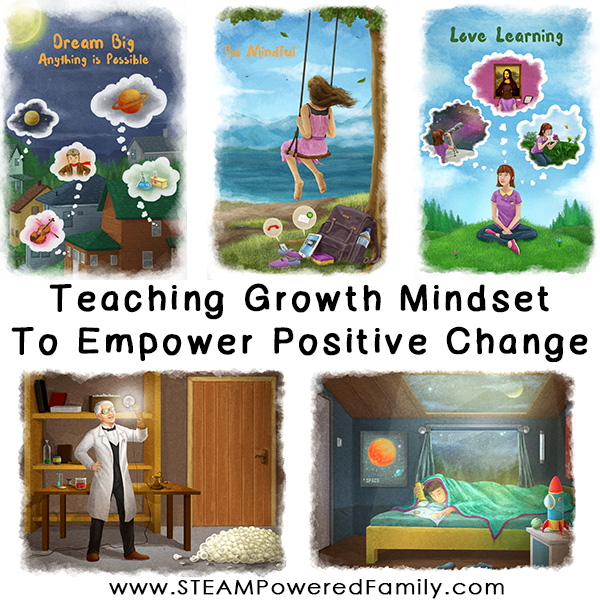Growth Mindset vs Fixed Mindset
I’ve studied a lot of motivation theory, and when it comes to students that are motivated to learn in the classroom, it often comes back to a growth mindset. Growth mindset vs fixed mindset in the classroom is not just a theory put out by psychologist Carol Dweck (2006). It’s now something we actively teach students in the classroom. People with a growth mindset believe that they can improve their intelligence, talent and abilities through effort and practice while a fixed mindset is the belief that those traits are static. A growth mindset can be developed, however, and as educators, it’s our job to do just that!
Growth Mindset vs Fixed Mindset in the Classroom
Disclaimer: This article may contain commission or affiliate links. As an Amazon Influencer I earn from qualifying purchases.
Not seeing our videos? Turn off any adblockers to ensure our video feed can be seen. Or visit our YouTube channel to see if the video has been uploaded there. We are slowly uploading our archives. Thanks!
Growth mindset vs Fixed mindset: Which do your students have?
If you are anything like me, you have all types of learners in your classroom! All students encounter obstacles. The difference between students with a growth vs fixed mindset is what they do when they hit those roadblocks. Students with a growth mindset are recognizable by their perseverance. If your students have a growth mindset, they will try again and again when they encounter an obstacle. They will seek out opportunities to practice their skill or build their knowledge and new skills. Students with a growth mindset use language like “I haven’t figured it out yet” while those with a fixed mindset say, “I can’t.”
How do you change a child’s mindset?
When it comes to helping students change from a growth mindset vs fixed mindset, you have to change your mindset first and then model it for them.
In a growth mindset, students believe that their talents and abilities are something they can develop through dedication, persistence, and hard work—just like muscles, which grow stronger with exercise. These students also believe that setbacks and failures are opportunities to learn and improve. With a growth mindset, teachers and parents have high expectations for their children and support them as they try again and again if they fail at something. You can teach students to believe that effort matters most. Even if you are not in a growth mindset yet, you can change your perspective and mindset and model it for your children.
How do you model a growth mindset?
Show your students how to have a growth mindset in the classroom by modeling what it means to have a growth mindset.
Celebrate your students’ effort.
First, celebrate effort rather than achievement. Show your students that you notice they are working hard, and acknowledge their efforts and praise them for it. Remind them to not worry about making a mistake or not doing something perfect the first time, with time and practice they can learn new skills.
Fail forward with a growth mindset.
Next, teach your students to fail forward. When you notice your kids are struggling, model how to handle the failure. You can always say something like, “Sometimes it is hard to learn new things, but if we keep working hard, we will learn how to do it.” Give an example of this in your own life. I always share a story from my teen years as well as something I’ve struggle with as an adult.
For example, I talked about how I struggled with math and Geometry concepts, but I came in for help and asked my peers to explain concepts in a different way. I ended up getting a B in the class. Also, I shared about my struggles with getting ready for my graduate exam. Believe it or not, I asked some of my eighth-grade Geometry students during study hall for Geometry tips. It had been 20 years since I took Geometry, and they were there with modern tips!
Show your students what resilience looks like.
Finally, model resilience. When you face challenges, model how to get back up again. Even when I faced roadblocks finishing my dissertation, I took a pause and then went back to it. A growth mindset is an attitude that can not be taught or learned in one day. It takes time, but modeling will help your children develop the right mindset.
How do you foster a growth mindset?
You can foster a growth mindset with these tips to help your students know that it’s always OK to fail and try again.
Encourage your child to be curious and ask questions.
So often, school is about teachers asking the questions. My mindset completely changed when I realized it was OK to pause what we were doing in class to answer student questions even if they don’t 100% relate to the concept. Most of the time, they aren’t trying to get you off topic.
They are simply trying to learn as much as they can about the world!
I tell my students that the students with the best grades are the ones that ask the most questions. Asking questions doesn’t mean that you are stupid or you don’t get it; it just means you don’t get it yet! Model asking questions about things you are curious about. We have the internet at our fingertips, so use your resources to help students find answers, or take it a step further and have them create a Genius Hour or Passion Project to investigate their question further.
Praise effort and hard work, even if the outcome is not perfect.
We are not robots, and we can’t be expected to be perfect all the time. It’s hard to have confidence when you’re always being told that you did something wrong. Instead, help students find the good in their work by celebrating it! When students answer a question in class incorrectly, try these tips to foster a growth mindset. Ask the question in a different way or talk about what is right about their answer. Also, ask if another student could add to what they said to help. This takes the focus off the mistake and puts it on the growth.
Cursive and handwriting can be tough for some of your students! Practice with some growth mindset handwriting activities. Praise them on their printing and talk about the letters that they are forming correctly even when they have struggles with others!
Point out the things your child does well.
Parent teacher conferences or class meetings are places where you can get hung up on a fixed mindset. Instead, start with all the things the student does great. In between, focus on their areas of improvement, then share the other things your student rocks at!
Give your students opportunities to take on challenges.
When it comes to growth vs fixed mindset, the best way to move towards growth mindset is to give students challenges. In my research for my dissertation, I found students are most engaged when they have appropriate levels of challenge in the classroom. Challenge your students with opportunities like Genius Hour, where they research their own questions and pursue their passions at least once a week for an hour. Try STEM challenges for growth mindset to challenge your students to try new things through Makerspace and Code Breaking activities.
Teach your students to reflect on their growth.
Reading about other challenges and reflecting on their own growth mindset is one way to help your students foster a growth mindset. The Big Life Journal is one growth mindset tool your students can use to read about challenges famous people who have failed and prevailed encountered. It’s also a place for your kids to reflect on their own obstacles and growth.
What does a growth mindset mean in the classroom?
It’s normal to see many students with a fixed mindset in the classroom. This is an opportunity to bring growth mindset vs fixed mindset lessons into the classroom. Explain that everyone can learn, but it takes work. A growth mindset means being open to learning from your mistakes and knowing that when you make a mistake or don’t know something…that it’s ok! It’s expected! We all need to make mistakes to learn. In fact, we’ll never get better at anything if we don’t make mistakes and learn from them.
Want to learn more about Mindset? Check out Carol Dweck’s book: Mindset: The New Psychology of Success. For students, the Big Life Journals for Kids and Big Life Journals for Teens are incredible tools.
Growth Mindset Printable Resources
Looking for a printable resource to use at home or in the classroom to help build a growth mindset in your tweens and teens? We have a powerful resource called the Growth Mindset Challenge to help guide the process.
For some cursive practice with a growth mindset twist, try our printable resource featuring words and quotes for cursive copying with a Growth Mindset theme.




